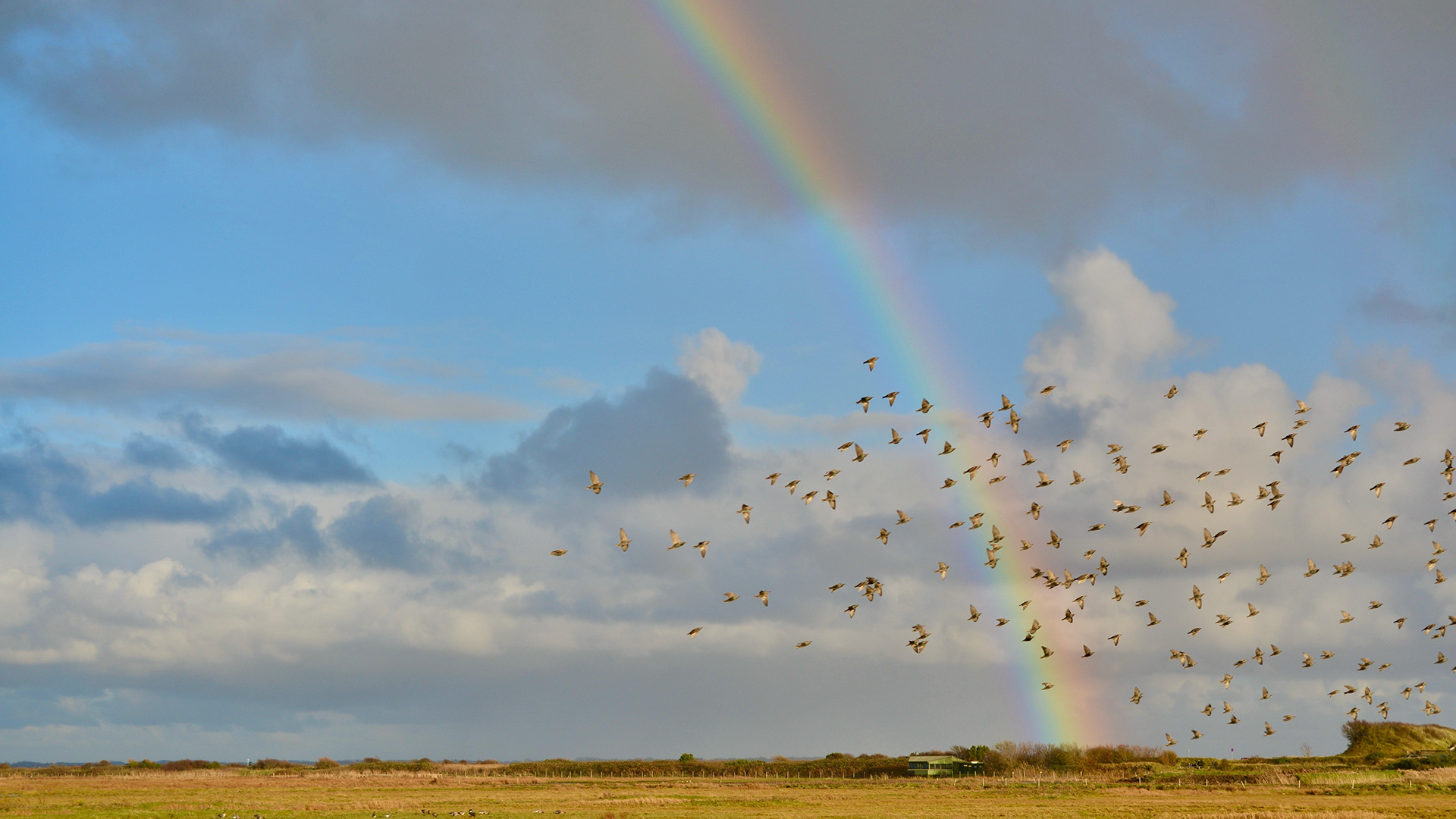Meteorological summer has started on an unsettled note for many, with rain and some unseasonable winds, but what do the online weather headlines have to say about the forecast?
After confirmation that spring was the warmest and sunniest on record for the UK, focus for online headlines has now shifted to what we can expect over summer, with some headlines framed more creatively than others when telling the forecast.
Here, we look at how some online headlines are reflecting the weather forecast.
How much rain does it take to make a wall?
“UK weather maps show England ‘disappear’ as huge 400-mile downpour sweeps in from Atlantic,” says one headline on the current forecast.
What our forecast says: Some gusty winds and heavy rain is in the forecast for Tuesday and into Wednesday. Low pressure to the north is pushing a front of rain gradually southeast on Tuesday, which will be followed by scattered showers and sunny spells on Wednesday. While unseasonable, the rainfall amounts expected are fairly typical and the size of the weather front isn’t often a good indicator of the conditions a person will experience. No, England won’t ‘disappear’.
Is snow in the forecast?
One online headline leads on the possibility of snow: “Freak Polar cold front sparks incredibly unusual phenomenon with SNOW forecast.”
What our forecast says: A cold front is responsible for the change in the UK’s weather, which is seeing a shift to wetter and windier weather on Tuesday and into Wednesday. This could indeed see a mixture of snow and rain over the high ground of Scotland over the next couple of days, but this isn’t the weather the vast majority of people will experience and isn’t unheard of, even at this time of year.
When will it get hot again?
“UK weather maps turn dark red showing exact date temperatures rocket to 27°C,” says one headline.
What our forecast says: Unsettled and changeable conditions are likely through much of this week, with a mixture of sunny spells and some longer spells of rain, though temperatures are likely to peak around 22°C in the south of England later in the week – on what is likely to be a fairly wet day for many. The headline above is using a single weather map beyond the usual forecast range to suggest an ‘exact date’ for warm weather to return, though this isn’t reflective of long-range forecasting, which is informed by hundreds of these model runs.
Find out more about ‘Exact date’ weather headlines and where they come from.
“37 counties in England set to sizzle in mini heatwave as temperatures reach 31°C,” says another headline, opting for a specific number of counties for this headline.
What our forecast says: Similarly to the above story, this headline looks further ahead at a single weather model output to not only suggest a specific temperature for weeks away, but also a specific number of counties. One single model at that range isn’t a good indicator of the whole forecast, which will come with in-built uncertainties at that range, especially if trying to forecast to county-level of detail.
The Met Office long-range forecast suggests that changeable conditions are most likely in the first half of June, with a mixture of settled and unsettled weather with a westerly weather regime most likely. There’s obviously a chance of some warmer spells, with these being more likely in the south and east.
“Exact date 'Spanish scorcher' set to hit UK as temperatures soar to 31°C,” declares a headline, once again promising an ‘exact date’ for specific conditions.
What our forecast says: Long-range forecasting comes with in-built uncertainty so suggesting an ‘exact date’ for weeks away for a specific weather type (and temperature) for the UK doesn’t particularly reflect the reality of the forecast. As stated above, the immediate forecast shows changeable conditions, with any more settled and long-lasting warmer weather more likely later in June, and more likely further south and east. Naturally, more details and confidence will be available closer to the time.
Find out more about ‘Exact date’ weather headlines and where they come from.
Find out more from the Met Office on how to make sure you’re getting the weather information you need online.



